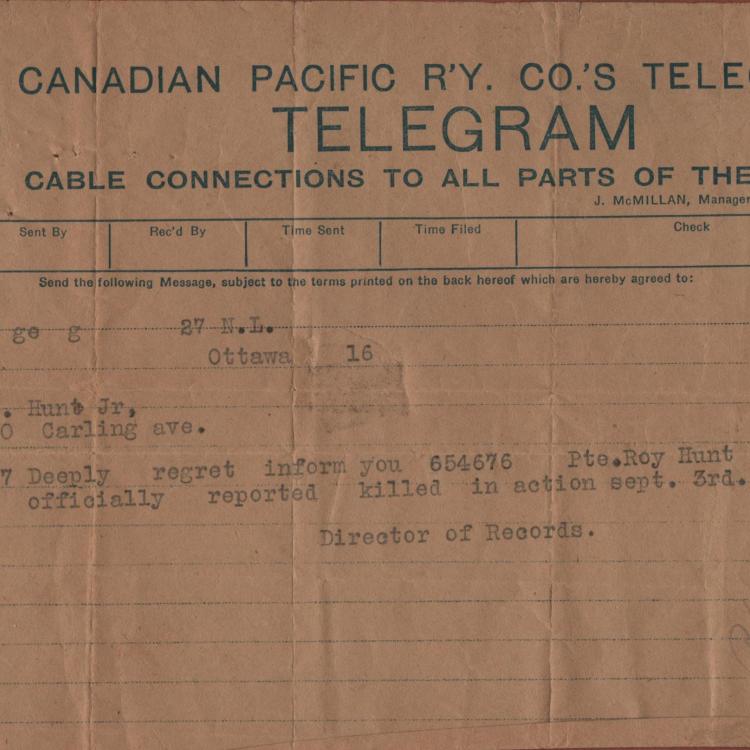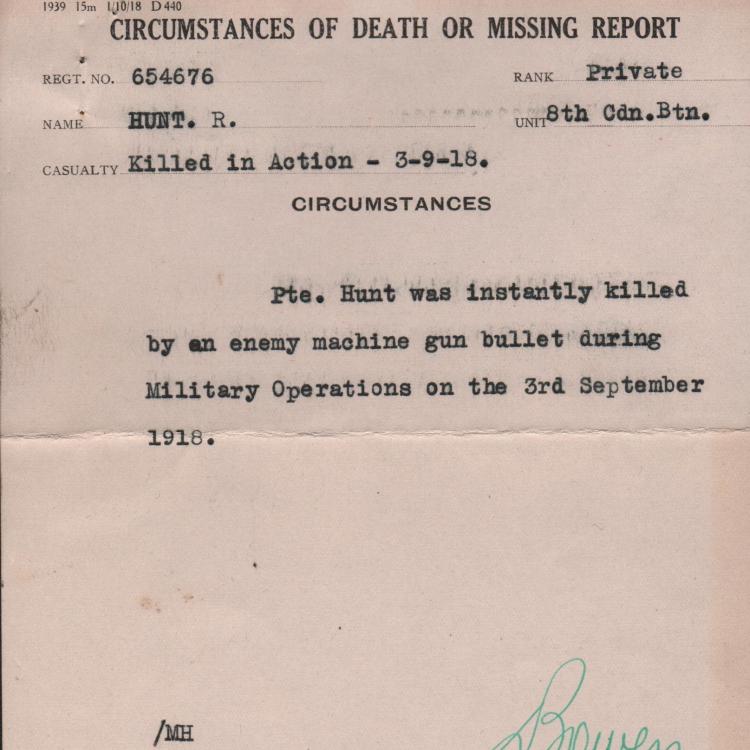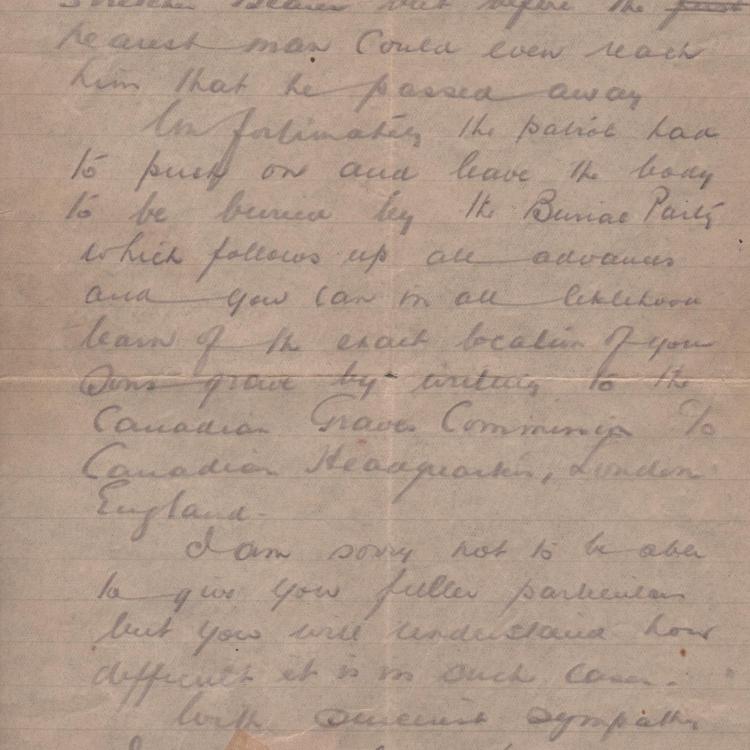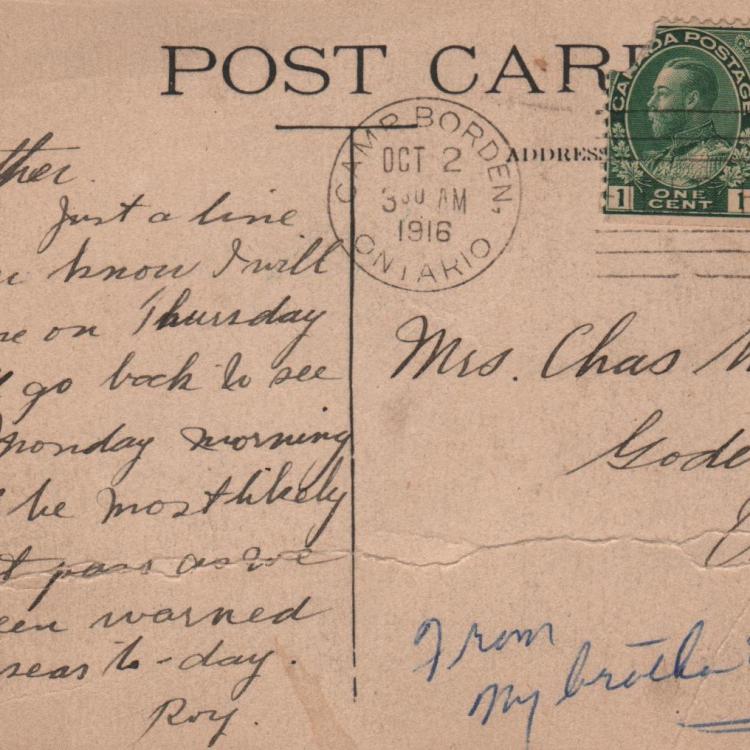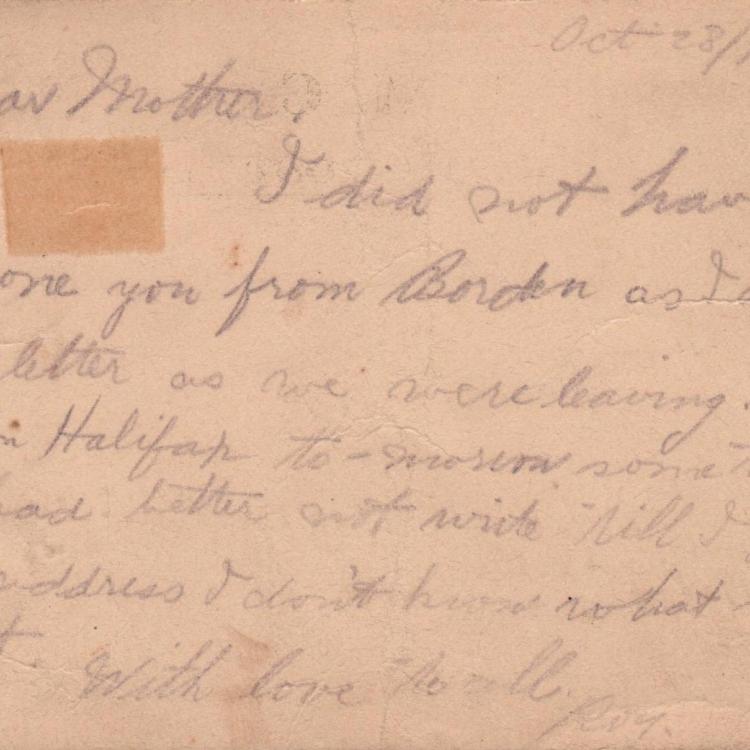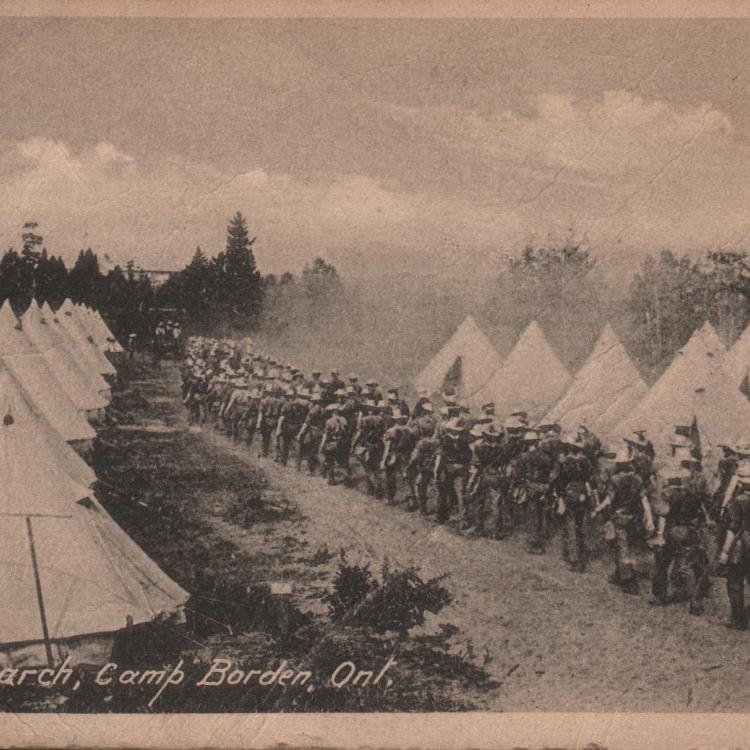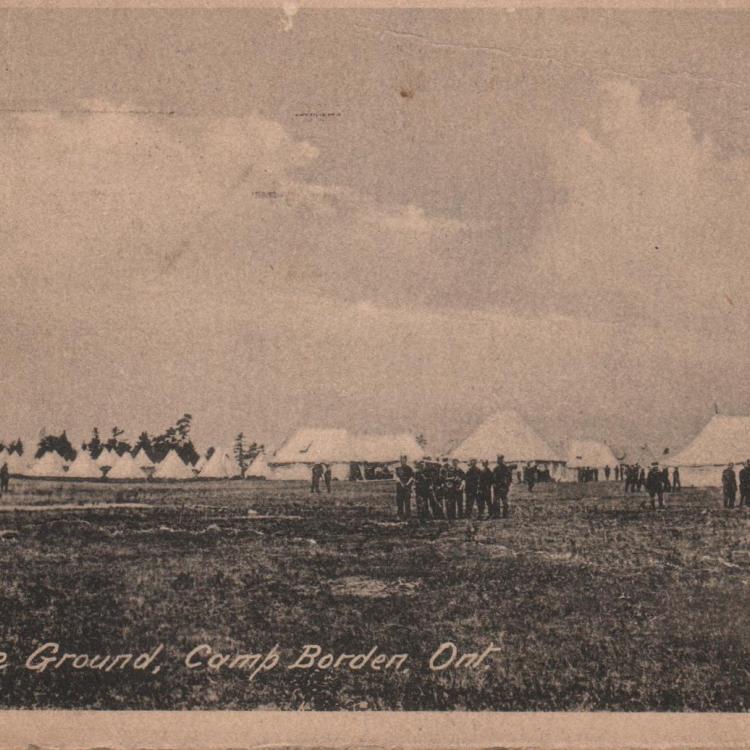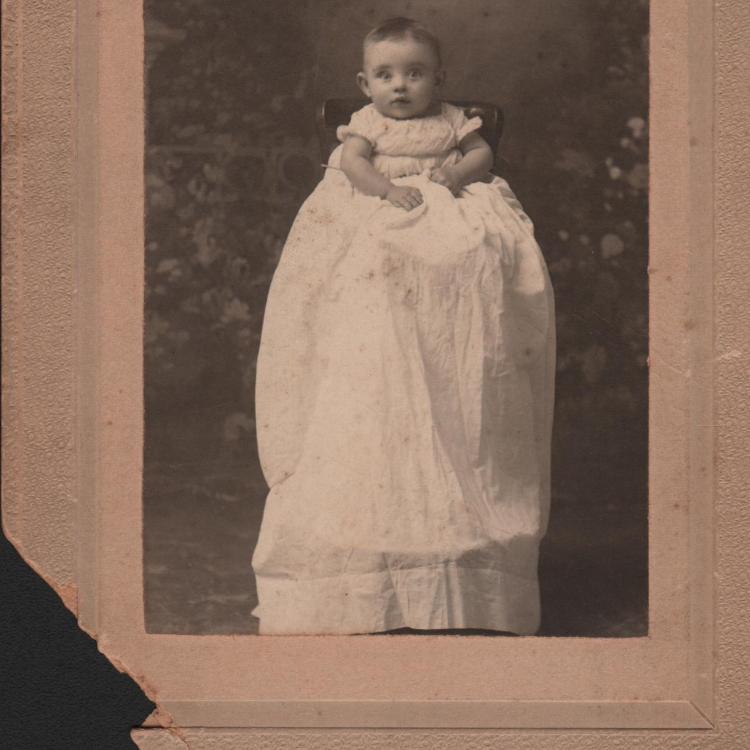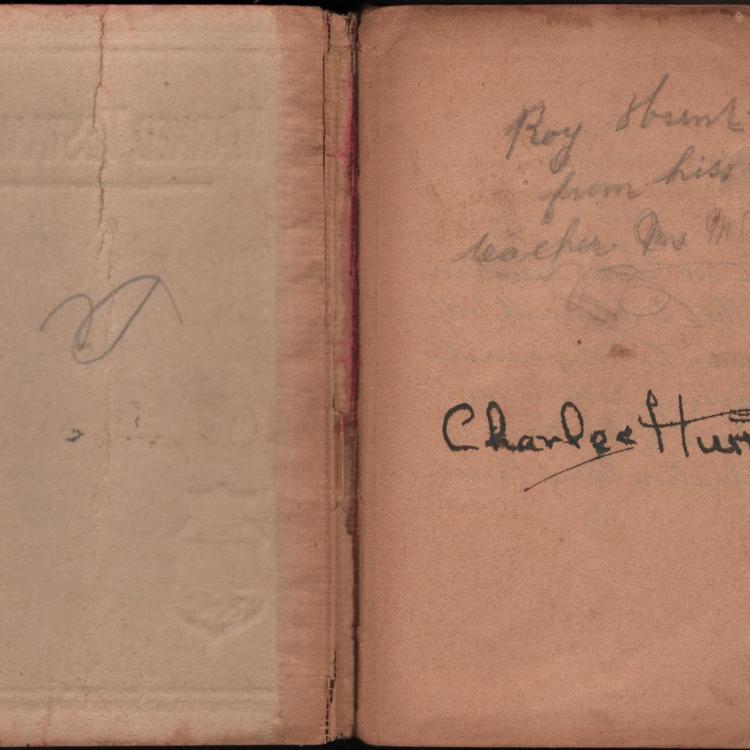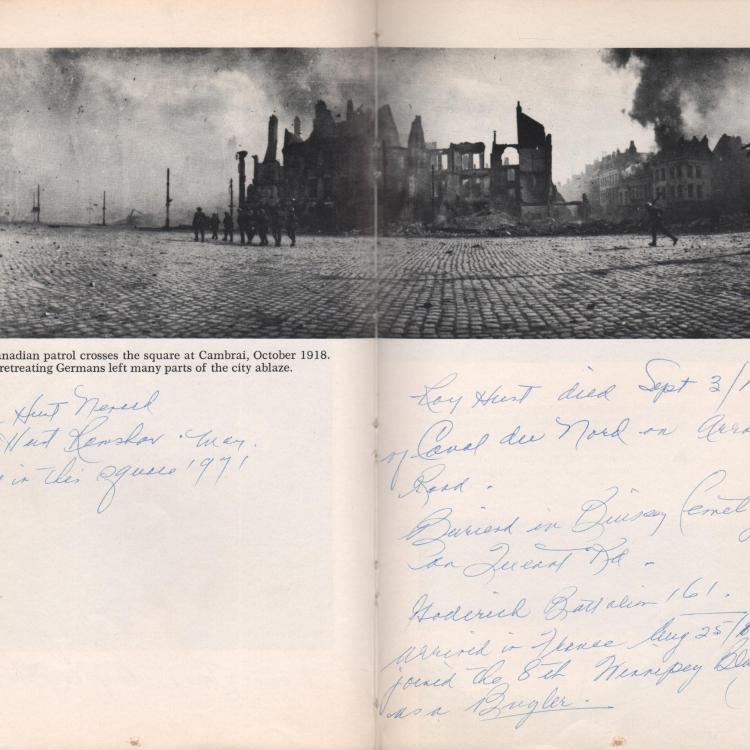HUNT, Roy Frederick
Next of Kin: Charles and Elizabeth Hunt, Toronto, Ontario
Occupation: Sailor
Personal Details: 5 ft. 8 ½ in., 155 lbs., fresh complexion, blue eyes, brown hair, Baptist
Born in June 1898, Roy Frederick Hunt was the eldest son of Charles and Elizabeth Hunt of Wellington Street, Goderich, Ontario. Roy was a student at Victoria Public School and on July 18, 1912 The Signal reported he had passed his entrance exams to attend high school or collegiate institute. He chose to follow in his father’s footsteps, becoming an apprentice machinist at the Doty Marine Engine & Boiler Company, Goderich. The Signal reported the events of the company’s annual picnic that was held in July 1913 at Black’s Point. A lively baseball match was held, pitting the men of the moulding and boiler shops against the machinists, with the machinists narrowly winning 9-8. Charles Hunt was a fielder, while Roy Hunt played short stop. He also placed 3rd in the Apprentice race, and 2nd in the Single men’s race.
Some time before 1916 Roy became a sailor aboard the steamer, the Glen Allen. Like many other young men, he left his position to enlist with the 161st Huron Battalion in Goderich on March 22, 1916. The battalion trained locally and at Wolseley Barracks in London, where in July 1916, Roy was reported as being absent without leave and forfeited 2 days pay. In September the battalion moved to Camp Borden. In an October 2nd postcard to his mother, Roy says he will be home for a visit, “likely our last pass as we have been warned for overseas to-day.” In a late October postcard Roy writes “We are now at the boundary between Quebec and New Brunswick at a place called Campbellton. We are having a dandy time good grub and lots of room we go out for a route march every afternoon in some town that we pass.” On November 1st the battalion sailed from Halifax aboard the S.S. Lapland, and arrived ten days later in Liverpool, England.
Roy would remain with the 161st Battalion at camps in England for more than a year. He was sentenced to one day’s Field Punishment No. 2 in late February 1917 for being absent without leave. On March 8, 1918 he was absorbed into the 4th Canadian Reserve Battalion at Whitley Camp. He was subsequently transferred to the 18th Battalion on March 28th and proceeded overseas to France, arriving at Etaples the following day. The battalion arrived at the Canadian Corps Reinforcement Camp on April 3, 1918. More than four months were spent at the camp when he was finally transferred to the 8th Battalion, joining them in the field on August 18th.
The Battle of Drocourt-Quéant began on September 3, 1918. Patrols from the 8th Battalion shoved out along the Cambrai Road and along a line 800 yards south of the road to cross the high ground west of the Canal du Nord, and keep Brigade advised of the situation. “B” Company was directed to go right and “C” Company went left. “A” & “D” Companies were held in support and reserve. The patrols progressed north of Buissy, and then north of Baralle, and at this time the order to advance was given to the Battalion. As the advance continued on a very wide front it was discovered that “B” Company was much too far to the right. “A” Company were ordered to be the front line advancing company south of the Cambrai Road, with “C” Company to the north. As the troops crossed the high ground west of the Canal, enemy artillery fire was received from the far side of the Canal and many casualties were taken by the Battalion. By day’s end 15 men were killed, 98 were wounded and 8 were missing.
The official report of Pte. Roy Hunt’s death states that while advancing with his Company from West of Villers-les-Cagnicourt to Baralle, he was hit by a machine gun bullet and instantly killed. A letter written to Roy’s mother by Captain L. K. Belcher, 8th Battalion, on September 13th describes a slightly different report of his death – “Dear Mrs. Hunt, It is with a great deal of sorrow that I write to tell you of the death of your son 654676 Pte. Hunt R. on the 3rd Sept 1918. On the afternoon of the 3rd the enemy were reported to be returning and patrol of an officer and 8 men, of which your son was one, were detailed to keep in touch with his rear guard and send back what information they could. It was while on this patrol that an enemy shell exploded and mortally wounded your son. We immediately asked for a stretcher bearer but before the nearest man could even reach him that he passed away. Unfortunately the patrol had to push on and leave the body to be buried by the Burial Party which follows up all advances and you can in all likelihood learn of the exact location of your sons grave by writing to the Canadian Graves Commission, c/o Canadian Headquarters, London, England. I am sorry not to be able to give you fuller particulars but you will understand how difficult it is in such cases. With deepest sympathy, I am yours truly, L. K. Belcher Capt.” In a tragic turn of events, Captain Belcher was killed in action 16 days after writing this letter.




